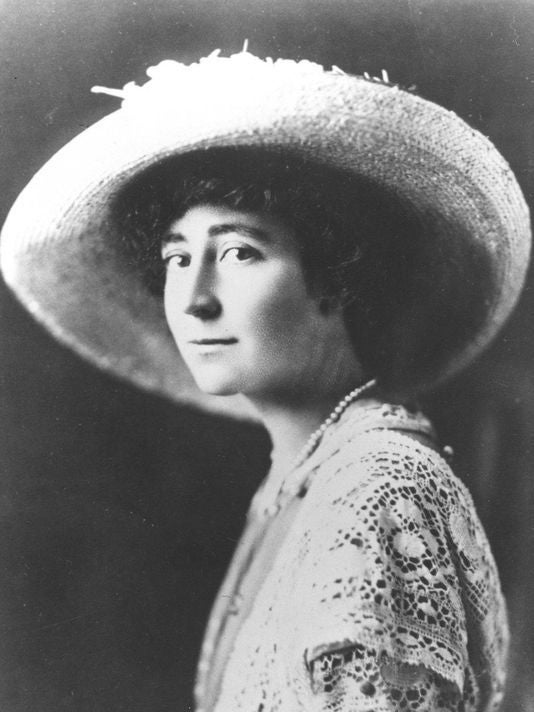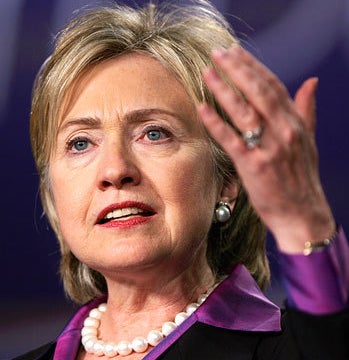
November ’16 witnessed a historic first. Americans elected a female candidate to an office never before held by a woman. It was a great victory for the country’s petticoat contingent. But it was a nail-biter. As the New York Times reported, “The vote was so close that no one could predict the result.”
At first it looked like a red head might adorn the high office. As the Times noted the Republican candidate was “tall, with a wealth of red hair.” And the Times rhapsodized upon the candidate’s colorful plumage. “Nothing is more beautiful than red hair: the ancient superstition that it was ugly has long given way to sense and reason.”
In the end, though, it was a woman described by the Times as “small, slight, with light brown hair,” who was headed to Washington. “I have plenty of work cut out for me,” she was reported as saying. She elaborated, “I am deeply conscious of the responsibility, and it is wonderful to have the opportunity to be the first woman.”
The Times knew its readers were also interested in her domestic skills, and the article announcing her victory ended as follows. “[She] makes her own clothes and hats, and she is also an excellent cook.” The next day the paper added, “she dances well” and “has won genuine fame among her friends” for her “wonderful lemon meringue pie.”
The year was not 2016, but 1916. And the red-haired and light-brown haired candidates described by the Times above were actually one and the same person, the Republican Jeannette Rankin. A social worker and suffragette from Montana, Rankin was elected as the United State’s first female member of Congress. There was a great deal of news coverage of her campaign and victory, which occurred when most women in the country did not have the vote. Yet the Times clearly struggled to get even the must fundamental facts about her right.
The paper described Rankin as tall, then short, and then tall again. Her hair was painted as red, light brown, sandy, and, most poetically, “locks of fire.” (Rankin told a reporter for the New York Tribune, “My hair isn’t red, and neither are my policies.”)
One hundred years later, as another woman stands poised to make another first, the Times and other newspapers’ coverage of Rankin is an instructive reminder of both the progress we have made and the progress that remains to be made. Donald Trump may have dominated the hair discourse this election cycle and brought the subject of misogyny to the fore, but there still are profoundly important ways in which Hillary Clinton remains pinned to her gender.
A couple of weeks after Jeannette Rankin’s election, the Times claimed that her fellow members of Congress would “find in their midst not that impulsive, irrational, sentimental, capriciously thinking and obstinately feeling being which many imagine women to be.” Instead, they would find “a strong, and well-balanced personality, scientifically trained, accustomed to strict reasoning, well versed in the art of politics, inspired by high social ideals, tempered by wide experience.”
A century later, Clinton struggles against the legacy of this fallaciously binary understanding of gender and politics. She must carefully curate her “feminine” side, even as her opponent flings misogynistic barbs. (“Do you think she looks presidential?” Trump asked at a rally over the summer. “I don’t think so.”)
To be a winning presidential candidate, Clinton must be like her male predecessors but not too much like them. She must seem presidential, even as her sartorial choices – pearls, pantsuits, Armani jacket – are endlessly scrutinized. Similarly, a century ago, journalists analyzed Rankin’s chiffon gowns, silk stockings, and satin pumps. The “Lady from Montana,” the New York World noted, “showed that fashions and office-holding were not incompatible
So too, a century after Rankin’s victory, the media remains inordinately focused on the woman candidte’s “likability” factor. As Time magazine recently noted – in an article titled, “Is Hillary ‘Likable Enough’?” – “For women, likability and qualifications are tied together in voters' minds.” Similarly, Rankin’s likability was assessed and emphasized. Describing Rankin’s entrance into Congress, the Tribune wrote, “The eyes of four hundred men were fixed upon her. An appealing smile crept over her face. It said as plainly as words, ‘Please like me.’ Unconsciously the men surrendered.”
Jeannette Rankin’s first act in Congress was to vote against America’s entry into World War I. “I want to stand by my country; but I cannot vote for war,” she declared. Fifty-five men, including the House majority leader, also voted against the war. However, the nation’s newspapers all focused on Rankin.
The Times, by now describing her hair as “glossy black – with here and there just a wisp of gray,” reported that Rankin ended her declaration with a sob and claimed “big tears were in her eyes.” The next day the Times elaborated, “Her appearance was that of a woman on the verge of a breakdown.” She “clutched at her throat repeatedly,” had a “look of helplessness on her face,” and “flung herself back into her seat, pressed her forehead and began to cry.” Rankin had voted, the Times suggested, “purely a woman’s vote.”
Rankin insisted she had not cried. (When her fellow congressman Fiorello LaGuardia was later asked about the matter, he answered, “I couldn’t see, because of the tears in my own eyes.”) Even so, the portrait of Rankin, as presented by the Times and other papers reaffirmed the perception that women legislators were psychologically unfit for office.
That fear lingers even a century later, forcing Clinton to “man-up” on military and other matters. Trump avoided Vietnam service due to bone spurs in his heels, but Clinton is the candidate who has had to prove her firm footedness, even to the point of hawkishness. At the same time, she must not be shrill or shrewish. She must smile but not too much. She must have a three-point plan for combatting terrorism, but she must not be perceived as an old hag, scolding nag, or emasculating bitch. All of which highly sexist stereotypes, she has been called.
In this election cycle in which the issue of misogyny has come to take center stage, Trump’s lewd comments and groping of women have been roundly condemned. Even so, an undercurrent of sexism continues to flow beneath American politics a century after Rankin’s victory.
Announcing Rankin’s election 1916, the New Haven Journal-Courier ran a headline declaring, “Congresswoman is Montana’s Choice.” A sub-headline added, “Danced with the Miners – First Woman To Win Honor Gained Many Votes By Ability As Tangoist, is Claim.”
Hillary Clinton has tangled, but not tangoed, with the miners.
Times change. The Times changes. But not yet enough.

